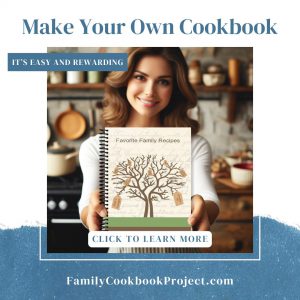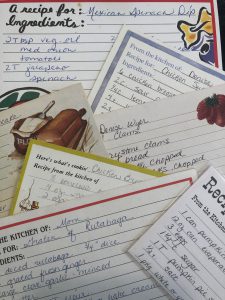The title of your recipe is the single most critical part of the entire recipe. Why? Because your title acts as the headline, and just like any headline, it carries an immense power and responsibility.
Consider how you flip through a cookbook when searching for a recipe. You don’t typically read every page from beginning to end like you would with a novel. Instead, you quickly scan the pages, looking for a recipe title or an appealing photo that draws your attention and piques your interest.
Out of all the elements in a recipe, the title has the greatest ability to capture a reader’s attention. Its job is to hook the reader, enticing them to dive into the recipe. A compelling title can transform a casual browser into a reader, and ultimately into someone who tries your dish.
So, what makes an effective recipe title? Here are a few key things to keep in mind:
- Catch Attention – Just like a well-crafted headline, your title should be eye-catching and engaging.
- Describe the Dish – While a title like “Gruel” may make sense to your family, it’s not informative for everyone else. Including the main ingredient and method can add clarity. For instance, “Baked Hamburger Gravy” is far more descriptive than “Gruel,” giving potential readers a better idea of what the dish is.
- Be Unique – If you’ve seen a title elsewhere, it’s likely too generic. Aim for a fresh, distinctive title that will stand out from the rest.
- Include the Source – In family cookbooks, adding a person’s name can give the recipe more significance. Titles like “Grandma’s Apple Pie” or “Lou’s Lemon Bars” help connect readers to the personal origin of the recipe, though this may be less helpful for those unfamiliar with your family gatherings.
- Highlight the Appeal – Make sure your title conveys why this recipe is worth making. For example, you’re not just selling a steak, you’re selling the “sizzle”—the benefits and appeal of your recipe.
Titles that focus on the reader’s cooking and eating desires are far more effective at drawing them into the recipe. A well-crafted title makes it clear which need your recipe meets. Whether it’s indulgence, health, quick preparation, or elegance, every reader has different priorities.
 Let’s look at these examples of chocolate chip cookie recipes:
Let’s look at these examples of chocolate chip cookie recipes:
- “Soft and Chewy Chocolate Chip Cookies”
- “Quick ‘n’ Easy Chocolate Chip Cookies”
- “Grandma’s Favorite Chocolate Chip Cookies”
- “Gluten-Free Chocolate Chip Cookies”
Each of these titles speaks to different needs and appeals to different readers. As you can see, the words you choose for your recipe title can significantly impact who will be interested.
With a bit of creativity and thoughtful wording, your recipe titles can shine, drawing readers in and giving your recipes the attention they deserve.
Bill Rice is Founder and Co-Publisher of the Great Family Cookbook Project, a website that helps families and individuals collect, preserve and share food memories by creating their own printed personal cookbooks. He is the author of The Wellfleet Oyster Cookbook and the Cape Cod Cocktail Cookbook (Available on Amazon), both created using FamilyCookbookProject.com. He is also editor of the Donovan Family Cookbook, now it’s third printing and is an avid genealogist tracing his family back to the 1600’s.
Follow Family Cookbook Project on Facebook, Instagram, Twitter TikTok, YouTube and Pinterest!


